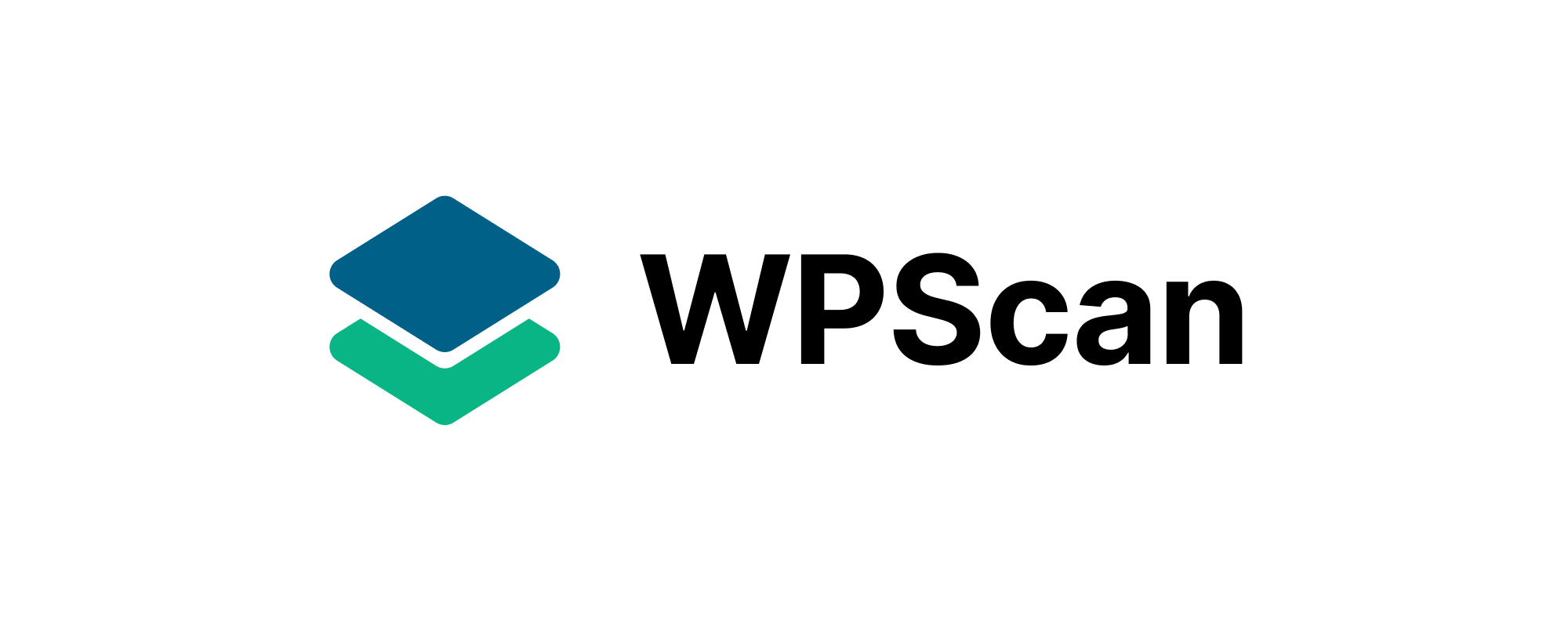| title | path | category | usecase | release |
|---|---|---|---|---|
WPScan |
scanner/WPScan |
scanner |
Wordpress Vulnerability Scanner |
WPScan is a free, for non-commercial use, black box WordPress vulnerability scanner written for security professionals and blog maintainers to test the security of their sites.
NOTE: You need to provide WPSan with an API Token so that it can look up vulnerabilities infos with https://wpvulndb.com. Without the token WPScan will only identify Wordpress Core / Plugin / Theme versions but not if they are actually vulnerable. You can get a free API Token at by registering for an account at https://wpvulndb.com. Using the secureCodeBox WPScans you can specify the token via the
WPVULNDB_API_TOKENtarget attribute, see the example below.
This repository contains a self contained µService utilizing the WPScan scanner for the secureCodeBox project. To learn more about the WPScan scanner itself visit wpscan.org or wpscan.io.
To hand over supported parameters through api usage, you can set following attributes:
[
{
"name": "some Name",
"context": "some Context",
"target": {
"name": "targetName",
"location": "http://your-target.com/",
"attributes": {
"WP_STEALTHY": "[true | false]",
"WPVULNDB_API_TOKEN": "[wpvulndb.com api token]",
"WP_ENUMERATE": "[Options]",
"WP_MAX_DURATION": "[seconds]",
"WP_THROTTLE": "[milliseconds]",
"WP_REQUEST_TIMEOUT": "[seconds]",
"WP_DETECTION_MODE": "[mixed | aggressive | passive]",
"WP_USER_AGENT": "[userAgent]",
"WP_HEADERS": "[headers]"
}
}
}
]Options for enumerate attribute:
Enumeration Process
Available Choices:
vp | Vulnerable plugins
ap | All plugins
p | Plugins
vt | Vulnerable themes
at | All themes
t | Themes
tt | Timthumbs
cb | Config backups
dbe | Db exports
u | User IDs range. e.g: u1-5
Range separator to use: '-'
Value if no argument supplied: 1-10
m | Media IDs range. e.g m1-15
Note: Permalink setting must be set to "Plain" for those to be detected
Range separator to use: '-'
Value if no argument supplied: 1-100
Separator to use between the values: ','
Default: All Plugins, Config Backups
Value if no argument supplied: vp,vt,tt,cb,dbe,u,m
Incompatible choices (only one of each group/s can be used):
- vp, ap, p
- vt, at, tExample configuration: (Note that the token isn't actually real 😉)
[
{
"name": "wpscan",
"context": "Example WPScan",
"target": {
"name": "Local Wordpress",
"location": "http://wordpress.example.com",
"attributes": {
"WPVULNDB_API_TOKEN": "RVR4GztDG4sZdfYUVsvyX7fGHvFZMXa7plbsoRHssvq"
}
}
}
]Example Output:
{
"findings": [
{
"id": "e132b47a-9f2c-41cd-be9b-95dc948a8bd3",
"name": "CMS Wordpress",
"description": "CMS Wordpress Information",
"category": "CMS Wordpress",
"osi_layer": "APPLICATION",
"severity": "INFORMATIONAL",
"reference": {},
"attributes": {
"requests_done": "23",
"db_update_finished": "",
"version": "4.0.29",
"start_time": "2020-01-16 15:05:08 +0000",
"end_time": "2020-01-16 15:05:14 +0000"
},
"location": "http://wordpress.example.com",
"false_positive": false
}
]
}To configure this service specify the following environment variables:
| Environment Variable | Value Example |
|---|---|
ENGINE_ADDRESS |
http://engine |
ENGINE_BASIC_AUTH_USER |
username |
ENGINE_BASIC_AUTH_PASSWORD |
123456 |
- Clone the repository
- You might need to install some dependencies
gem install sinatra rest-client - Run locally
ruby src/main.rb
To run the testsuite run:
rake test
To build the docker container run:
docker build -t IMAGE_NAME:LABEL .


